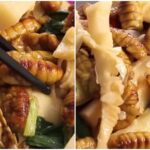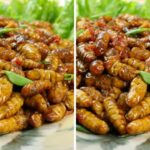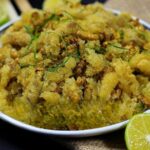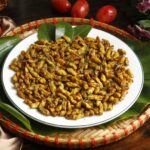Cassava is widely cultivated across the districts of Phu Tho, but Cam Khe stands out as the most prominent area. This region boasts endless cassava hills, particularly in communes such as Tien Luong, Dong Luong, and Dieu Luong. The abundant supply of raw materials has created ideal conditions for the development of silkworm farming using cassava leaves.
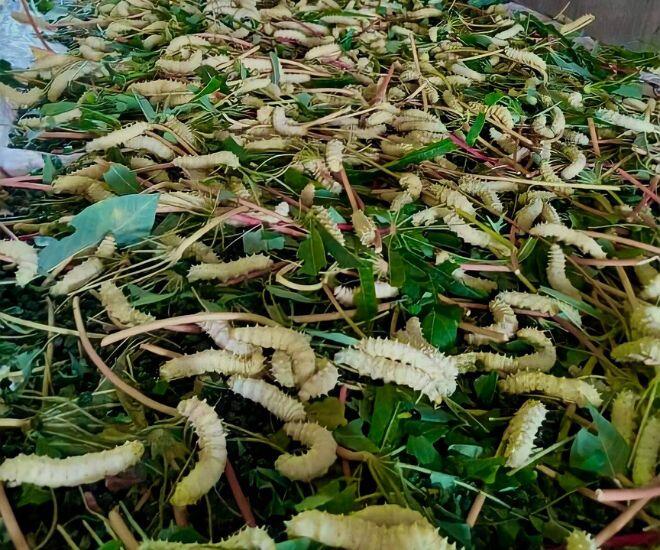
While mulberry silkworms are typically small and smooth, cassava silkworms have a completely different appearance. They are larger, about the size of an adult’s finger, with rows of spines running along their bodies. This difference is not only physical but also evident in their economic value. Cassava silkworm farming is considered more profitable than mulberry silkworm farming due to its superior advantages.
One of the special features of the cassava silkworm farming model is its ability to fully utilize all by-products. The “lazy” silkworms, which produce less silk or do not spin cocoons, are specifically selected for food processing. The rest are reared for their cocoons, providing valuable silk. After spinning silk, the pupae are further used as food. Even the moths that have laid eggs are not wasted but become nutritious food for poultry, fish, and other animals. This closed-loop life cycle optimizes resources, bringing multidimensional economic value to farmers.
The cassava silkworm rearing season usually lasts from May to September or October annually, coinciding with the vigorous growth of cassava leaves. During this period, people in Phu Tho can raise up to six batches of silkworms, ensuring a stable supply for the market.
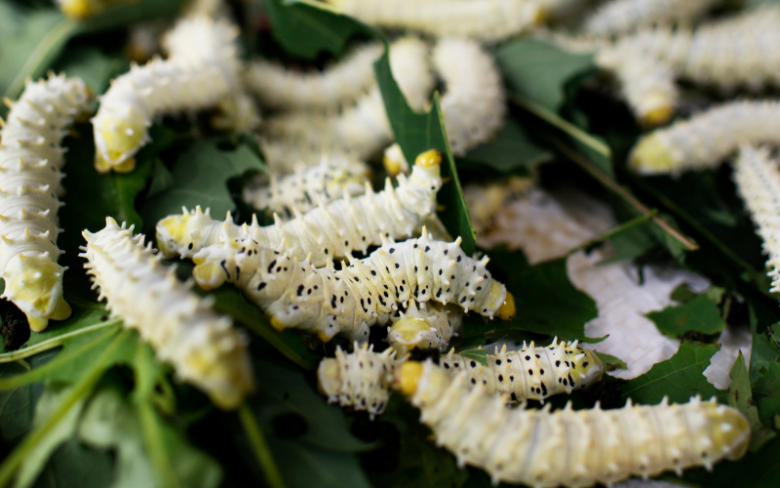
The value of cassava silkworms goes beyond economic aspects. Traditionally, silkworm pupae and mature silkworms are considered highly nutritious, even likened to “ginseng and velvet” of the countryside. They are trusted as a precious remedy to treat malnourished children, weak bodies, or women with low milk supply after childbirth.
Scientifically, mature silkworms and pupae are rich in protein, fat, and various essential vitamins and minerals. Their characteristic nutty and fatty flavor makes them a delicious and nutritious delicacy. Even those who cannot consume silkworm pupae directly can benefit from them. According to folk knowledge, silkworms soaked in alcohol can be used for massage, helping to relieve pain and reduce pain effectively.
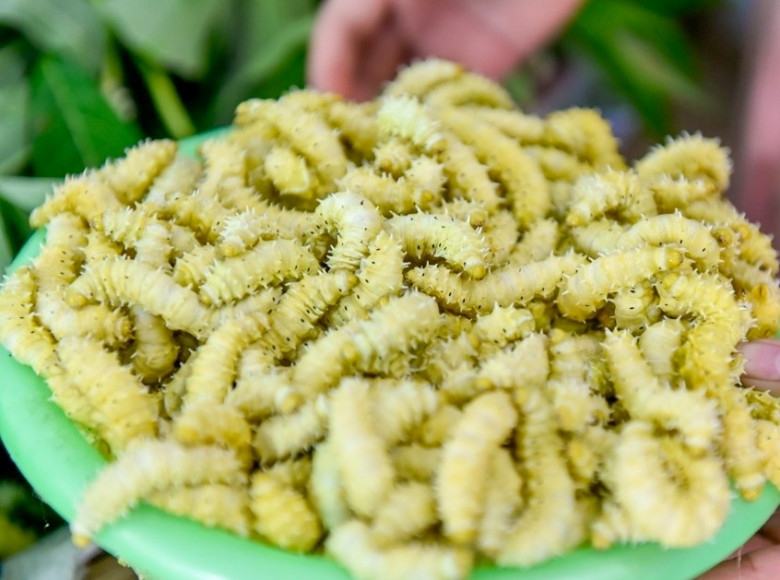
In Phu Tho, cassava silkworms are transformed into various traditional dishes, both delicious and nutritious, suitable to be eaten with white rice or as a side dish with alcohol. Popular choices include silkworm fried with lime leaves, silkworm fried with betel leaves, crispy fried silkworm, and boiled silkworm.
For enthusiasts of alcoholic beverages, boiled or crispy fried silkworms are ideal options. Boiled silkworms are prepared simply to retain their natural flavor. Mature silkworms, which no longer eat leaves, are cleaned, seasoned with a pinch of salt, and boiled just right. Locals often add a slice of ginger and a touch of turmeric to the boiling water to give the silkworms an appealing yellow color and a subtle aroma. After boiling, the silkworms’ heads and legs are removed, and they are mixed with finely chopped lime leaves. When served, they are dipped in a sauce made from fish sauce, lime juice, garlic, and chili, offering a delicate blend of sweetness and fattiness, along with the distinctive flavor of fresh silkworms.
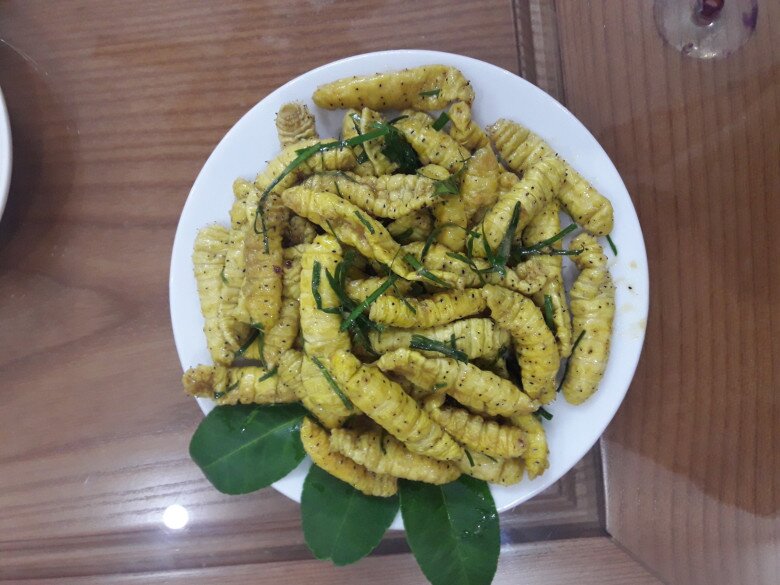
Crispy fried silkworms offer a different experience, with a crunchy outer shell and a soft, sweet inside. After being cleaned and blanched to reduce the silk, the silkworms are fried to a golden color in hot oil. The frying process, which takes about three minutes, causes the silkworms to curl up and become crispier. This dish is best enjoyed hot, sprinkled with finely chopped lime leaves to enhance the flavor.
Another delectable dish is stir-fried silkworms. After cleaning, the silkworms are stir-fried dry in a pan with a little seasoning powder to release their water content. Then, a touch of fish sauce is added for flavor. When the silkworms start to crisp up, cooking oil is poured in, and they are stir-fried until golden brown and aromatic. Finally, chopped lime leaves or betel leaves are mixed in, and the dish is seasoned to taste. The stir-fried silkworms are savory, with a crispy exterior and a chewy texture, leaving an unforgettable impression on anyone who tries them.
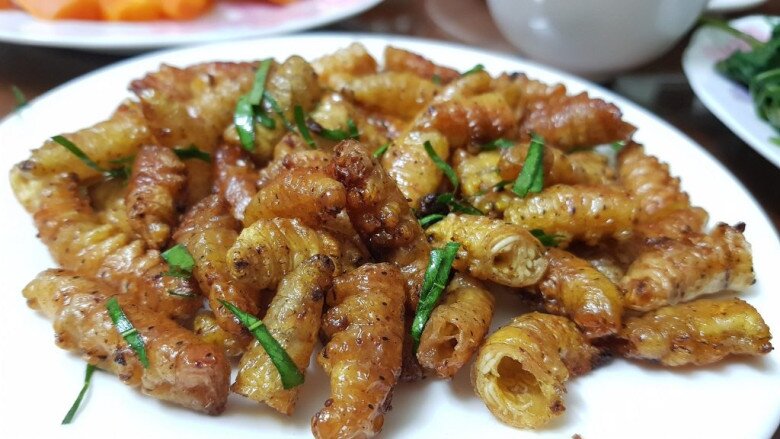
Tasting cassava silkworms is not just about indulging in a local specialty but also deeply connecting with the hospitable and sincere nature of the people of Phu Tho. Every dish and flavor encapsulates their hard work, creativity, and strong attachment to their homeland.
When visiting the sacred Land of Phu Tho, tourists not only admire the majestic scenery and listen to historical stories but also have the opportunity to explore the essence of the region’s cuisine through cassava silkworms. The unique and unforgettable flavors will surely leave a lasting impression, captivating visitors and making them reluctant to leave.

























